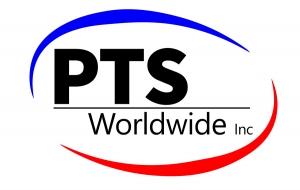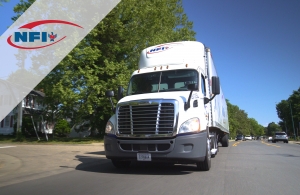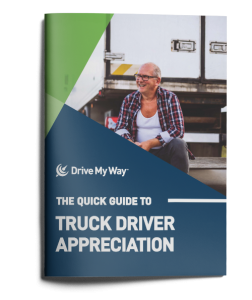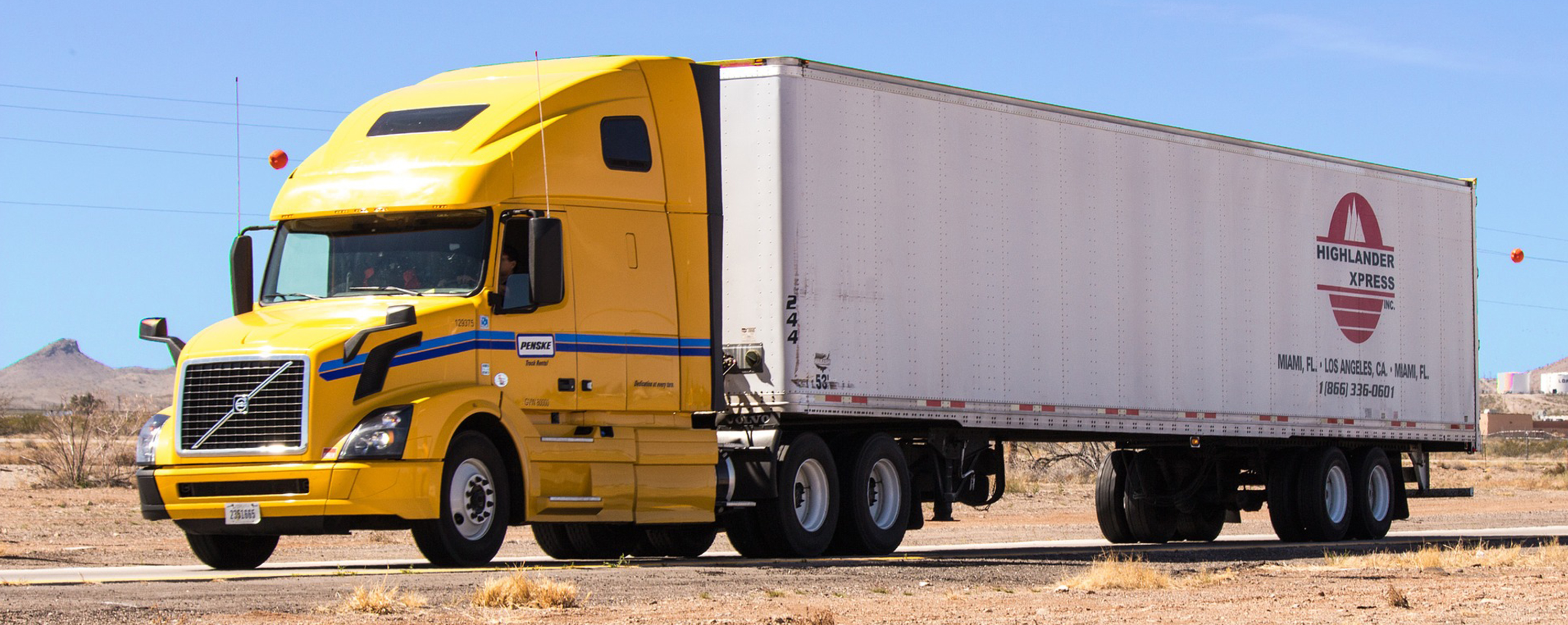
The trucking industry is no stranger to the ebbs and flows of economic cycles, and the current freight recession presents a unique set of challenges for companies striving to maintain a strong driver workforce. As freight volumes dip and margins tighten, it’s tempting for organizations to scale back their recruitment efforts and focus solely on short-term cost-cutting measures. However, this shortsighted approach can leave companies ill-prepared when the inevitable market rebound occurs.
Despite the temporary slowdown in freight demand, the fundamental need for qualified drivers persists. The driver shortage, a perennial issue in the trucking industry, shows no signs of abating. In fact, the American Trucking Association (ATA) has projected that by 2030, the industry could face a shortage of 160,000 drivers, underscoring the importance of continuous driver recruitment and retention efforts, even during market downturns.
The Imperative of Continuous Recruitment
Forward-thinking trucking companies recognize that navigating the freight recession successfully requires a strategic approach to talent acquisition and retention. Rather than hitting pause on driver hiring, these organizations are doubling down on innovative solutions to attract and retain top talent, ensuring they have the human capital needed to capitalize on opportunities when the market inevitably rebounds.
One such strategy is leveraging the power of strategic partnerships with specialized driver recruitment firms like Drive My Way. By tapping into their extensive network of qualified drivers and cutting-edge matching technology, trucking companies can maintain a robust talent pipeline without the overhead of a full-time in-house recruitment team. This scalable approach allows organizations to adjust their hiring efforts in real-time, aligning resources with dynamic market conditions.
The Benefits of Driver-Centric Recruitment
Moreover, partnering with a driver-centric recruitment firm ensures that the candidate experience remains a top priority, even during challenging economic times. Drive My Way’s unique approach leverages driver preference data to facilitate personalized job matching, tailored communication, and a deep understanding of what drivers value most in an employer. By prioritizing the driver experience, trucking companies can differentiate themselves in a competitive market and foster long-term loyalty among their workforce.
This personalized approach extends beyond the initial recruitment phase. By continuously gathering and analyzing driver preference data, companies can refine their offerings to better align with driver needs and expectations. This might include adjusting route assignments, implementing more flexible scheduling options, or enhancing benefits packages based on driver feedback.
The value of such strategic partnerships in navigating the freight recession is evident in the success story of CEVA Logistics, a global leader in first and final mile deliveries. By partnering with Drive My Way to streamline their driver hiring process, CEVA Logistics achieved remarkable results, hiring an average of 30 independent contractors per quarter at a cost per hire of just $747. This collaboration, which began in March 2022, focused on filling final mile delivery driver positions across the United States. Drive My Way’s custom solutions and seamless integration with CEVA’s existing TenStreet system enabled them to meet high-priority hiring goals efficiently, even in a challenging economic climate.
CEVA Logistics’ experience underscores how strategic partnerships can effectively address recruitment challenges during economic downturns. By leveraging a driver-centric approach and innovative recruitment solutions, companies can maintain a strong pipeline of qualified drivers, positioning themselves for continued success in the competitive transportation industry.
Enhancing Driver Retention During Economic Downturns
Another critical aspect of effective driver retention during a freight recession is a commitment to ongoing communication and engagement. Regularly seeking feedback from drivers and demonstrating a genuine interest in their well-being can go a long way in fostering loyalty and reducing turnover. Drive My Way’s platform facilitates open communication channels, enabling trucking companies to gather valuable insights from their driver workforce and make data-driven decisions to improve retention.
This continuous feedback loop can help companies identify potential issues before they lead to turnover. For instance, if multiple drivers express concerns about a particular route or customer, management can proactively address these issues, demonstrating responsiveness to driver needs and potentially averting costly turnover.
Investing in Driver Development
Investing in driver development and career advancement opportunities can also help trucking companies weather the storm of a freight recession. By offering training programs, mentorship, and clear pathways for growth, organizations can demonstrate their commitment to their drivers’ long-term success, even during challenging economic times. This investment in human capital not only enhances driver retention but also positions companies to emerge from the recession with a highly skilled and engaged workforce.
Consider implementing a structured mentorship program that pairs experienced drivers with newer recruits. This not only provides valuable support and guidance for new drivers but also offers a sense of purpose and recognition for veteran drivers, potentially improving retention rates across both groups.
Leveraging Technology for Retention
In addition to personalized recruitment and development strategies, leveraging technology can play a crucial role in enhancing driver retention during a freight recession. Advanced fleet management systems, driver-friendly mobile apps, and AI-powered routing technologies can improve efficiency, reduce frustration, and enhance the overall driver experience.
For example, implementing a user-friendly mobile app that allows drivers to easily access route information, communicate with dispatch, and manage their schedules can significantly improve job satisfaction. Similarly, AI-powered routing systems can optimize routes to minimize empty miles and maximize earning potential, addressing one of the key concerns drivers often face during economic downturns.
Building a Resilient Workforce
As the trucking industry navigates the complexities of the current freight recession, it’s clear that a proactive, driver-centric approach to recruitment and retention is essential for long-term success. By forging strategic partnerships, prioritizing the driver experience, and investing in human capital, trucking companies can weather the storm and emerge stronger, ready to seize opportunities in the post-recession landscape.
Companies that maintain their commitment to driver recruitment and retention during the freight recession will find themselves with a significant competitive advantage when the market rebounds. They’ll have a stable, experienced workforce in place, ready to meet increasing demand, while competitors who scaled back their efforts may struggle to ramp up quickly.



 As we mentioned, drivers are already speaking to each other about your carrier. Your company already has a reputation, and you can’t override it by a referral program. Either your drivers believe you have a strong company and culture that
As we mentioned, drivers are already speaking to each other about your carrier. Your company already has a reputation, and you can’t override it by a referral program. Either your drivers believe you have a strong company and culture that  Many companies use incentives to nudge drivers into making referrals. Most of these incentives are monetary rewards, although they don’t have to be. As we learned in high school economics class, incentives matter.
Many companies use incentives to nudge drivers into making referrals. Most of these incentives are monetary rewards, although they don’t have to be. As we learned in high school economics class, incentives matter. It’s easy to think of referral programs as a waste of money if you haven’t used them before or measured their impact. Try to think of driver referrals as an investment into your
It’s easy to think of referral programs as a waste of money if you haven’t used them before or measured their impact. Try to think of driver referrals as an investment into your  Comprehensive CDL Recruitment Solutions
Comprehensive CDL Recruitment Solutions



 There are several companies that are already well known in the trucking industry for their strong veteran recruitment programs. In addition to PTS Worldwide, CRST Trucking, Averitt, Schneider National, and JB Hunt are
There are several companies that are already well known in the trucking industry for their strong veteran recruitment programs. In addition to PTS Worldwide, CRST Trucking, Averitt, Schneider National, and JB Hunt are 















